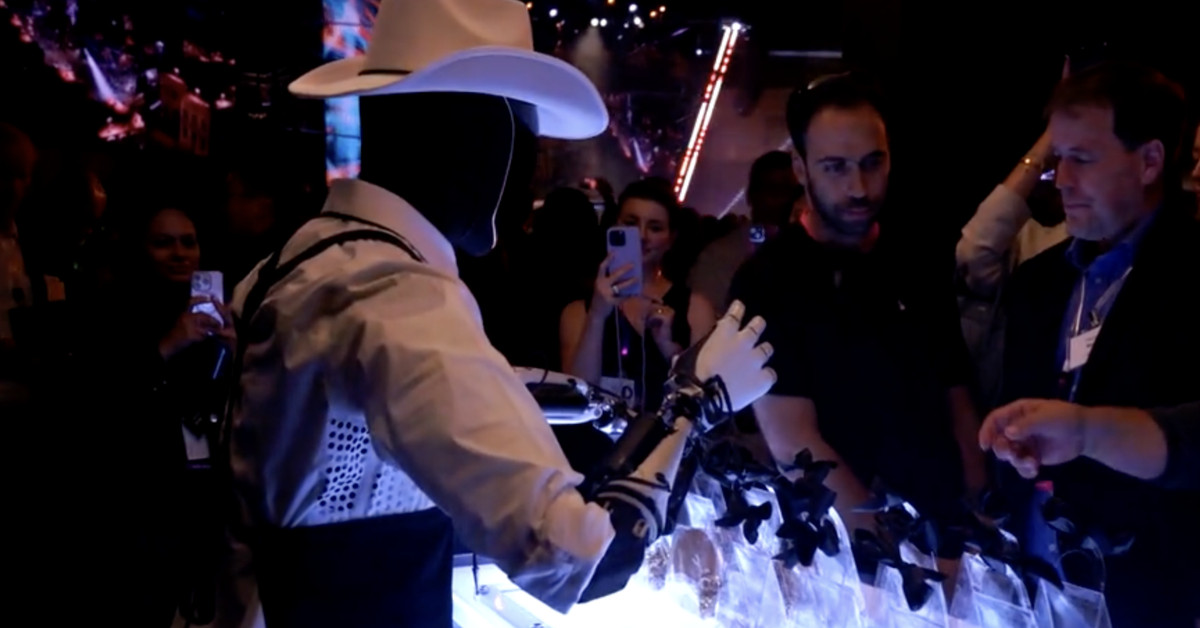Tesla's Hocus Bogus

Welcome back. Let's Warp.
Last week, Tesla and its actively-democracy-undermining CEO Elon Musk hosted an event to unveil multiple daydreams of actual products.
Originally planned for August, the event featured the marquee reveal of the Tesla Cybercab. The vision of the Cybercab, or at least of the prototype that they showed off, is one of privately owned autonomous vehicles. Alongside the traditional taxi fleet model ("Tesla Network"), Musk has repeatedly made the pitch that your car could function as a sort of AirBnB on wheels, making local rides for people in your neighborhood after it drops you off at work or something. He's also floated the bewildering idea of the cars functioning as mobile AI computing nodes. Perhaps I have to explain why this is a horrible idea that would not work, but at the very least I ask you to consider which of your computers is at constant risk of an uninsured Nissan Rogue completely destroying it.
Musk has been making the claim for almost a decade that "full self driving," or FSD, is just around the corner. It is not. I cannot stress enough that it is not. Not for Tesla at the very least.

Tesla also showed off their Robovan concept. It's an autonomous van. With those 6-8 inches of clearance off the ground I can't wait to see it deal with any number of real-world road surprises. Like, I don't know, the slight incline of a hotel driveway or a pothole.
But honestly, Tesla has a long history of showing off products and features that either never make it to the streets or arrive with any number of flaws. This is not new or news. So let's talk about the robots.
Optimus crime

Marching out with the steady cadence of pop culture's greatest mechanical villains, the humanoid Optimus robot was the social media star of Tesla's event. If you go on Twitter, you'll see a number of Elon's other bots extolling the merits of all the immigrant labor, bartending, and other jobs they view as subhuman being replaced by these guys.
First, I should say: these robots are mechanically very impressive. Stop to consider how many upright, bipedal animals millions of years of evolution have produced. It's basically us and kangaroos. For a number of biomechanical reasons, balancing all of a locomotive being's weight on what amounts to two little flaps is extraordinarily difficult. As we can see from Earth's extraordinary biodiversity, things with 4+ legs tend to win out.
Past bipedal robots like Atlas from Boston Dynamics are short, keep their center of gravity very low, and are in a constant plié (that's a bended knee for all of you who haven't taken a ballet class). So the simple fact that these things have basically human proportions and appear to move in a humanoid way, granted under perfectly ideal circumstances, is pretty impressive.
Everything else about them is dumb as hell.

When we look just at the presentation of these robots at the event, they are very clearly incredibly fancy puppets. As noted in the article above, all of the robots respond to verbal questions immediately. As of right now, absolutely zero AI models can respond with the inflection and immediacy that these robots do. Very evidently what is happening here is the robots are being remotely operated by live humans. Consider the hilarious irony of a man showing off the humanoid robots he swears will replace silly human labor by employing humans to do the silly task of pretending to be robots. You can find similar technology similarly implemented at Disneyworld.
But maybe I'm being too harsh. This is just a proof of concept! With more advancements in AI and in robotics, maybe these things really can be what they are pretending to be. But even if this is the case, is that what we even want?
It won't be humanoid robots
Decades (centuries even!) of culture have given us troves of iconic humanoid robot fare. There is something primordial, something basic about us that lead us back down this path of imagination. What is the Frankenstein story if not a vision of what it might be like to create as God creates? What is the Golem of Jewish folklore if not our manifestation of the super human? We are constantly dreaming, constantly iterating on the function and utility of being human. It is at once a search for purpose and a bleak indication of the lack thereof for us to continue building a battery powered image of ourselves. As robots, we can escape death, we can lift cars, we can do Terminator stuff, or whatever.
There is one main reason that humanoid robots ain't it, and that's that the human form sucks at a lot of stuff.
Let's talk about laundry. Here's a basic breakdown of how I do it:
- I gather all of my dirty clothes in one place, maybe a hamper or laundry basket. Sometimes I organize by color but who is really doing all that.
- I put a powdered disinfectant in the washer.
- I place my dirty clothes in the drum.
- I drip some detergent into the drum.
- Based on what's being washed, I turn some knobs on my machine and turn it on.
- About 35 minutes later, I take the clothes that need to be hung dried out and place them on a drying rack.
- I make sure the drier thing has all the lint removed.
- I put the clothes that go in the drier into the drier.
- Based on what's being dried, I turn some knobs on my machine and turn it on.
- Sometime later, when everything is dry, I fold it up and put it where it needs to go.
Consider what this does to a human body and mind. You have to stoop down, carry stuff, move things around, know where stuff goes, know where stuff is, know how your specific washing machine/drier work. Your body has to know the range or force your hand needs to exert on the door to open and close it. Your eyes need to know the exact amount of detergent you intend to put into the machine.
In order to get a humanoid robot to do these things, it needs to understand so much about the world. And not just "the world," but your world. It needs to see color, it needs to read and understand text, it needs to handle your clothes in a way that doesn't rip them to shreds, it needs to carry stuff around that weird corner in your home. It needs to know which laundry machine you have. It needs to hang dry your clothes and not let them fall to the ground in a musty heap.
The amount of technological innovation, of capital investment, of scientific genius that would be necessary to make a consumer humanoid robot that could do laundry passably better than the average human is, to put it mildly, unfathomable. It is not happening any time soon. I am not saying this because I do not believe in the magical human spirit, the indomitable way we tackle problems. I am saying this because I do.
If you're an engineer or problem solver of any type, how would you improve the process of doing laundry? Here are some of my suggestions, based on my outlined process above:
- Make your hamper and the laundry machine the same thing. Only put your laundry in one place. No more carrying it around.
- Make the washer and the drier the same machine. This technology currently exists.
- Give your washer the capability to know what's inside it. This technology currently exists.
- Using this information, have the washer dispense the appropriate amount of detergent and set the wash cycle appropriately.
It gets complicated. Now you have to separate hang drying stuff and tumble drying stuff. But what if when you put the clothes in the hamper in the first place it was automatically sorted. These are robotics problems. When Roomba looked at the issue of dusty floors, they did not invent the world's most advanced technology to operate a typical mop and vacuum, they invented a little rolling machine to do it.
The irony of all of this is that Tesla knows that this is the dumbest possible way to advance consumer robotics. How do I know? Because the Cybercab is a f*cking robot. When trying to make autonomous vehicles Tesla did not make a metal person to drive their existing cars, they built the car itself to be the robot. When you actually try to solve problems of human inefficiency or incapability, you don't introduce a worse human into the equation, you redesign the world around the technology.
Look at this warehouse. When you decide it won't be run by humans, suddenly the possibilities unlock. When automating telephone operators we did not invent a machine to physically move the wires on a switchboard around.
I don't need to belabor this point much more. The markets agree with me. Since the reveal on October 10, Wall Street has been largely unimpressed.

Not that Wall Street is to be respected for much of its analysis, but still.
Anyway...
This newsletter will continue to be a place where the tech companies are challenged by the lived, material reality of life. I find myself frustrated with the coverage these companies get, as I don't find they ask "Who needs this?" or "Will this work?" enough. It is stunning to me that after over a decade of overpromising and underdelivering, Elon is still allowed to jabber on about the untold ways he is here to make our lives better.
I guess it's no wonder who his new bestie is, then. Overpromising and underdelivering while going unchecked by the courts and the media is kind of their bag.








